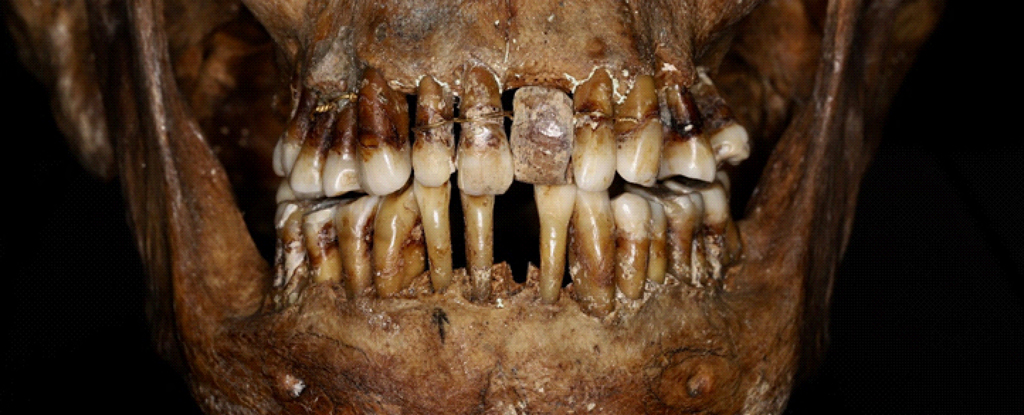400 years after her death, scientists have uncovered the long-buried secret of a 17th-century French aristocrat: she used gold wire to keep her teeth from falling out.
The body of Anne d’Alegre, who died in 1619, was discovered in 1988 during an archaeological dig at the Chateau de Laval in northwestern France.
Embalmed in a lead coffin, her skeleton – and her teeth – were remarkably preserved.
Back then, archaeologists noticed she wore dentures, but they didn’t have advanced scanning tools to find out more.
35 years later, a team of archaeologists and dentists has determined that d’Alegre suffered from periodontitis that loosened her teeth, according to a study published this week in the Journal of Archaeological Science: Reports.
A “cone beam” scan, which uses X-rays to create three-dimensional images, showed gold wire had been used to hold several of her teeth together and straighten them.
She also had an artificial tooth made out of ivory from an elephant – not from the then-popular hippopotamus.
But those elaborate dental works “only made the situation worse,” said Rozenn Colleter, an archaeologist at France’s National Institute for Preventive Archaeological Research and the study’s lead author.
The gold wires would have required repeated tightening over the years, further destabilizing the adjacent teeth, the researchers said.
D’Alegre probably didn’t just suffer pain for medical reasons. At a time when looks were considered a value and rank in society, there was tremendous pressure on aristocratic women.
Ambroise Pare, a contemporary of D’Alegre who was a physician to several French kings and designed similar dentures, claimed that “when a patient is edentulous, their speech becomes spoiled,” Colleter told AFP.
A nice smile was especially important for d’Alegre, a “controversial” twice-widowed socialite “who didn’t have a good reputation,” Colleter added.
war and widowhood
D’Alegre lived through a turbulent period in French history.
She was a Protestant Huguenot who fought against the Catholics in the French Wars of Religion in the late 15th century.
Widowed once by the age of 21, she had a young son, Guy XX de Laval.
As the country plunged into the eighth religious war, D’Alegre and her son were forced to hide from Catholic forces while their property was confiscated by the king.
Her son then converted to Catholicism and went to fight in Hungary, where he died fighting at the age of 20.
Widowed for a second time, D’Alegre died of illness at the age of 54.
D’Alegre’s teeth “show that she’s been through a lot of stress,” Colleter said.
The researcher said she hopes the research “does a little bit to rehabilitate her.”
It is estimated that nearly one in five adults worldwide are affected by severe periodontal disease World Health Organization.





